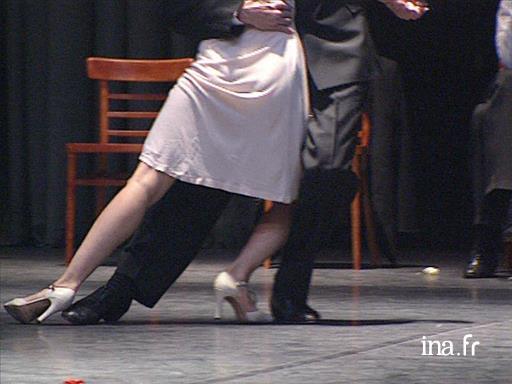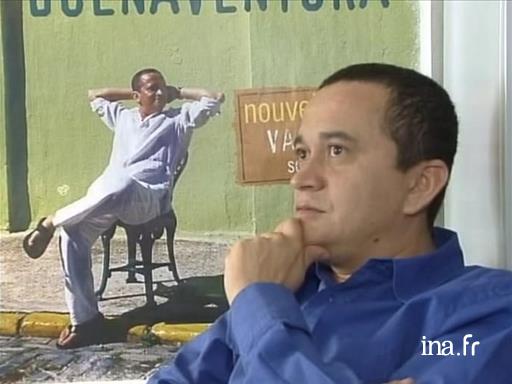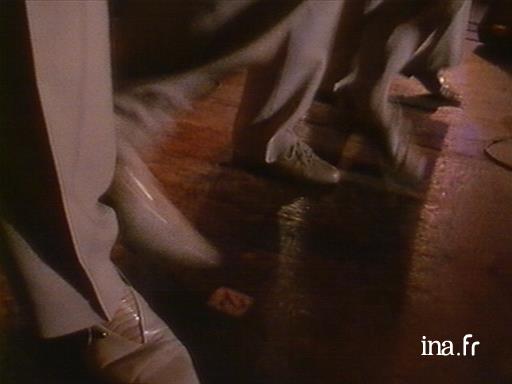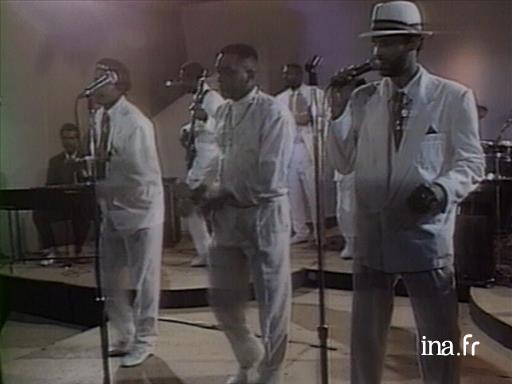
Tango and Salsa: both cousins, one white the other a mullato?
Seemingly very different musical genres
Although Tango and Salsa are both classified under the category of so-called Latin dances, there seem to exist more differences between them than similarities, to such an extent that they are opposed in almost every respect:
- In terms of their geographic area. The Tango is strongly identified with a very specific area, even a single city (the Río de la Plata, Buenos Aires), while tropical music, and especially its modern avatar, Salsa, is nomadic in nature, born from the constant interactions between Cuba, New York, Puerto Rico, and countries in South America.
- In terms of dance aesthetic. Even if Salsa also exudes a strong sensuality, its spirit is quite different from that of Tango While Salsa is full of swirls, mischievousness, and has suggestive sways of the hips, Tango is internalized, elegant, and is tinted with a sense of tragedy.
- In terms of musical structure. With Tango, the musical structure is heavily influenced by harmonies and European instruments (violin, bandoneon, and piano), with compositions that alternate verse and chorus; a strong emphasis is placed on melodic expression and little room is left for improvisation. Salsa, on the other hand, combines the instrumental contributions of African percussion and jazz brass instruments, with a musical structure that is separated into two parts (presentation / vocal and instrumental improvisation) directly derived from Cuban son.
- *In terms of beat *. In contrast with the relatively simple binary beat of Tango- despite the presence of many syncopations and rubato - in salsa, we find the relatively complex polyrhythms of African origin, repeated almost ad obstinato (with the exception of a few breaks) throughout the piece.
- In terms of poetic atmosphere. The lyrics of Tango - when there are any, because a good portion of the 2 X 4 repertoire is exclusively instrumental - are very often tinted with nostalgia and love-induced sadness. Those of salsa, on the contrary - and there are always lyrics - cover a much wider expressive register: hope, revolt, bitterness, mockery, and humour...
So if these two forms of expression are so radically different, why are they grouped together under the same name?
A common origin
Quite simply between Tango and Salsa, despite their apparent differences, basically stem from the same ethno-musical event: in this instance, the great migratory movement that since the 16th century brought successive waves of people of European and African origin to the shores of the New World, among whom a slow process of transculturation occurred, giving rise to various types of fusion music in the Americas.
Contemporary musicologists have gone so far as to say that Tango, contrary to how it appears, actually possesses some very ancient African ancestry. There is one thesis in particular by the late Juan Carlos Caceres (see story: "The black roots of the Tango" below). The thesis explains that, in the 18th century, Buenos Aires had roughly the same ethnic composition as Havana, with its many domestic slaves and its port that was rife with illegal activities and which swarmed with a racially mixed population. And the black suburbs of Buenos Aires, like the legendary district of Montserrat, echoed to the beat of African drums, Candombe celebrations, dance gatherings known as "Tango Congo", and carnival parades. As was the case in Cuba, this gave rise to an initially mixed musical culture, including the current Murga, Milonga acandombeada, and the Candombe, which can still be seen in Montevideo today.

The whitening of Argentina’s population and of Tango
Things changed when, in the 1880s, Argentina's President Julio Roca implemented a policy to europeanize Argentina, with three components: the ethnic cleansing of the Mapuche Indians of the Patagonian pampas (known as "the Desert Campaign"); the eviction of the black population by drafting men to serve in deadly wars, and the displacement of African descendants to Brazil; Finally, a massive call for European immigration (hoping for German engineers, but what they in fact got were mainly illiterate Italian peasants and Russian Jews fleeing the pogroms).
But even at the end of the 19th century, by which time the black peoples had already been decimated by wars and epidemics or deported out of Argentina, and then considerably marginalized by the huge wave of migrants from Europe, the Tango that was born in the working class suburbs already contained distant echoes of African rhythms, conveyed by carnival drums or by milongas sung by travelling gauchos and “girls with loose morals” of often mixed descent.
Music from disreputable establishments, music from the fringe elements of society, and half-bloods, music that was coarse and obscene, the tango that existed then simply did not fit with the cultural plans of Argentina’s ruling class of the time- they were fully intent on copying a more refined European culture. But an amazing event occurred: this same Tango, despised by the Argentine elites, would soon trigger a veritable frenzy in Paris. Paris, city of fashion, capital of European high culture! On the brink of WWI, this success brought about a reversal of attitudes among Buenos Aires’ bourgeoisie, who then accepted to appropriate Tango, just as the city’s ordinary people had already been doing since the beginning of the century. But there was one condition: it was to be stripped of all its signs of obscenity, negritude, and marginality, to become an honourable dance, without any vulgar hip movements and inappropriate lyrics. So then came Carolos Gardel and his songs that were so full of nostalgia for the unrequited lover, as well as Tango academies where one learned to dance upright with the bust straight, without touching your partner, and the transformation of its spicy and light beat in 2/4 to the more solemn 4/4. Its music was now exclusively played by artists of European descent, especially Italian.
In the meantime, in the Caribbean, and particularly in Cuba, musicians of all skin colours continued to invent mixed rhythms, notably Cuban son, born in the Oriente mountains. Cuban son was a rhythm that combines European harmonies and melodic sense with African polyrhythms and the taste for collective improvisation. After succumbing to the influences of jazz, it would soon migrate to Havana to be used to liven up cabaret evening and gambling houses.
1920 saw the great split between a whitened, europeanized, elegant Tango with its somewhat solemn sounds, and an intermixed, spicy, rousing tropical music.
Different directions during the 20th century
During the 20th century, the two musical genres took profoundly distinct paths and developed very differently.
Despite its international reach in the 1930s, Tango continued to be strongly identified with a single city: Buenos-Aires, and continued to draw its poetic themes and its creative sources from the Argentine capital. Moreover, despite a constant development of its style, this urban music from the Río de la Plata continued to be called Tango all through the century - a genre that inhabitants of Buenos-Aires have always considered an essential component of their identity and which has resulted in the production of a huge musical corpus, estimated at 100,000 records. It is a heritage that is now in danger of being destroyed. The musician Ignacio Varchauski is working to ensure its conservation (see "Tango archives").
Tropical music, in contrast, renewed itself constantly thanks to its mixed influences and the inventiveness of its artists, giving rise to countless variants in just as many regions: Cuban Son, Plena, Cumbia, Valenato, Merengue, Mambo, Cha Cha Cha, and soon to follow Salsa and Reggaeton. There was a constant movement of cultural fusion and stylistic recombinations which also incorporated a strong influence from African-American music, with the jazzified montuno sound from Havana and the Latin New York Jazz of the 1940s, and of course Boogaloo and Salsa, which appeared towards the end of the 1960s.
This is also probably the reason why Puerto Ricans and Cubans sometimes tear each other apart when it comes to the question of the origins of Salsa. It was without a doubt created with this name in New York in the early 1970s at the initiative of young musicians who were either mostly Puerto Rican or of Puerto Rican descent, such as Ray Barretto, Willie Colon and Eddie Palmieri.

Salsa, Willie Colón
Bernard Lavilliers leads us through the discovery of Salsa in New York. Interview with musician Willie Colon on the origins of Salsa. He calls New York "The Mecca of tropical sound". Bernard Lavilliers, who is in a bar in a Puerto-Rican district, composes a salsa tune on the guitar. The report is illustrated with dances sequences performed in discos.
But its fundamental rhythms, like those of Cuban son, mainly come from Cuba. And if, during the 30 years subsequent to the Castro revolution, Cuba was somewhat marginalized on the International tropical music scene, it however experienced a spectacular come back from the mid to late 1990s, with the release of a so-called new music genre called "Timba", which was popularized by bands such as Van Van, Irakere, Adalberto Alvarez, NG La Banda, and the singer Isaac Delgado. The documentary “Cuba Havana /music without borders” provides us with an invaluable account of the time - early 1990s - when this music, already in full swing in Havana, was getting ready to conquer the world’s music scenes.
A quasi-simultaneous globalization movement at the dawn of the 21st century
Over the past 30 years, Salsa and Tango have experienced growing international success, which has expanded outwards to reach very culturally distant regions, like China (see “Salsa fever has reached China”). Their similar destinies to some extent bear witness to their common identity, i.e. that of fusion music fundamentally related to dance.
It is not difficult to see why salsa and the tango have both simultaneously taken the world by storm: expansion of the leisure society and the pursuit of personal self-fulfillment; the desire to overcome loneliness and meet other people of the opposite sex more easily; the pleasure of finding an identity through the practice of a unique leisure activity that allows you to become part of a community of aficionados; its exotic appeal and promotion of traditional sexual identities that have been somewhat confused by the feminist revolution; opportunity to practice a physical activity combining pleasure, relaxation and aesthetic satisfaction, etc... With its series of interviews with French tangueros, the documentary "Special Envoy: time to tango" has helped us to really appreciate the different factors that have contributed to this international craze for Latin dances.

The age of tango, tango classes, interview with fans of tango
Tango has crossed borders and has gone beyond a fashion phenomenon. Portraits of enthusiasts, who during their classes in the dance hall, practice this dance to the sound of bandoneons. Guy Marchand talks about his love for these rhythms.
In turn, it has helped to fuel a renewed interest in native forms of popular expression in their country of origin. This is especially true in Argentina, where the Tango was pushed to the sidelines in the 1960s by Rock, Disco, Pop and Nueva Canción. From the 1990s and especially 2000 onwards, however, it began to seduce the capital’s youth. It is a movement that resulted in the emergence of a new generation of artists, both dancers and musicians, who have decisively helped to renew and revitalize the genre. This is evidenced by the documentary “Forever tango” dedicated to one of these iconic dancers of the younger generation, Pablo Aubia, who helps to promote the interest in tango around the world, both thanks to his many international tours and by attracting foreign aficionados to Buenos Aires, who are eager to experience the origins of Tango

Tango forever
TV report. Buenos Aires, an encounter with young people who practise Tango. Portrait of Pablo Inza, a dancer who organizes many dance evenings and who teaches Tango. Every evening, the milongas open their doors to dancers. Interview with Christy, an American student who came to Argentina to be at the birthplace of this dance.
Commentary based on factual images interspersed with interviews with Pablo Inza and Mariana, dancers and teachers of tango.






